Introduction
When we think of substance abuse, it’s easy to picture a stereotype. But the truth is, addiction doesn’t belong to any single age or background. Nowadays, teenagers may experiment out of curiosity or peer pressure, young adults might binge drink or use party drugs, working professionals often misuse alcohol to cope with stress, and older adults can become dependent on painkillers or sedatives without realizing it.
Every age group faces unique pressures that can make drug or alcohol use feel like an escape. That’s why understanding who is most at risk, why people turn to substances, and how to get help is so important for breaking the cycle — for individuals, families, and entire communities.
Hence, to make everything clear, this blog will dive deep into the nitty gritties of which age groups are most likely to use these drugs, types of substance abuse, and how the right substance abuse treatment can help.
Why People Abuse Drugs: The Root Cause
Addiction is multifactorial – it rarely stems from a single desire to “get high.” Experts emphasize that drug abuse arises from a complex interplay of biology, psychology, and environment. To understand this practise closely, research identifies several broad underlying factors that commonly drive substance abuse:
- Genetic predisposition:A family history of addiction greatly raises one’s risk. Twin and family studies suggest up to about half of addiction vulnerability is inherited. Genetic variations affecting the brain’s reward circuitry can make drugs feel more intense or rewarding for some people. These inherited traits aren’t destiny, but they set the stage for addiction risk.
- Mental health and self-medication:Anxiety, depression, PTSD and other psychiatric disorders frequently lead people to self-medicate with drugs or alcohol. People with social anxiety or depression may use substances “to try to feel less anxious,” and chronic stress is a major factor in starting or continuing drug use. Mental health illness disorders share many root causes – changes in brain chemistry, genetics, and trauma exposure – so someone struggling emotionally may turn to substances for temporary relief.
- Trauma and adverse experience:Exposure to trauma can also powerfully increase addiction risk. Reports say that childhood trauma raises the likelihood of substance use disorders, suicidality and other problems, and one review found over 30% of adults with SUD had a history of childhood abuse. In other words, unresolved trauma or chronic emotional pain often drives people toward drugs as a coping mechanism.
- Stress and burnout: Chronic life stress, such as from a demanding job, financial troubles, or family pressures, can at times push adults to use substances for relief. People may start by having a drink after a hard day or taking pills to relax, not realizing they are creating a habit. Over time, what feels like harmless relaxation can turn into routine dependence.
- Hidden progression:Often a person does not recognize when occasional use crosses the line. In the early stages, individuals may believe they can control or stop their substance use. Early warning signs signal that dependence is forming.
Genetic and Biological Factors
Biology plays a key role in addiction risk. Family and twin studies consistently show a strong heritable component to substance use disorders. People with a close relative who has an addiction often share these genetic traits. However, genes interact with the environment – even a high-risk genetic profile may never lead to SUD if the person never encounters significant stress or exposure to drugs. Nevertheless, researchers estimate genetics can account for roughly 40–60% of the vulnerability to addiction.
Mental Health and Emotional Factors
Psychological issues are deeply intertwined with substance abuse. Many individuals self-medicate undiagnosed or untreated mental illnesses with drugs or alcohol. For example, someone with depression or anxiety may drink to lift their mood or take stimulants to calm racing thoughts. In practice, those with PTSD, bipolar disorder, ADHD, or other psychiatric conditions are at much higher risk of developing SUDs..
Likewise, past trauma greatly increases the likelihood of drug abuse. Trauma disrupts emotional regulation and leaves lasting distress; substances may temporarily numb those painful feelings. In fact, research shows that up to about one-third of adults with addiction report significant childhood trauma. These shared roots explain why treating depression or PTSD without addressing substance use often fails – the disorders fuel each other. Overall, the presence of mental health struggles or trauma is a powerful driver behind many cases of drug or alcohol abuse.
Social and Environmental Influences
One’s surroundings can normalize or discourage drug use. Children raised in families where parents drink heavily or use drugs are at higher risk themselves. The CDC lists “family history of substance use” and even “favorable parental attitudes” toward drugs as risk factors for youth abuse. Similarly, hanging out with friends who drink or use drugs dramatically raises a teen’s chance of trying them. .
Beyond family and peers, broader environmental stressors matter too. Living in communities with high drug availability, gang activity, poverty, or community violence can make substances seem like an easy escape from daily stress. In contrast, strong social support can be protective. In short, growing up in an unstable or drug-tolerant environment – whether through family, friends, or neighborhood – significantly increases the chance of substance abuse.
Life Stress and Coping Mechanisms
As people age, the reasons for drug abuse often shift toward coping with adult responsibilities. Many adults turn to alcohol or pills to unwind from work stress, burnout, or family pressure. For example, someone might start taking prescription sleeping pills to cope with chronic insomnia from a demanding job, or have “just one beer” every night to relax after childcare. At first, this may seem harmless, but such habits can subtly evolve into dependence..
Addressing Underlying Causes in Treatment
Because so many factors fuel addiction, effective treatment must look beyond the substance itself. Leading experts insist on integrated approaches. For example, NIDA notes that the high co-occurrence of mental illness and SUD means “an integrated approach” is needed: screening and treating both issues simultaneously leads to better outcomes. In practice, this means counseling and therapy focus not only on stopping drug use, but also on healing trauma, managing depression/anxiety, and improving life skills.
In summary, substance abuse has diverse “root causes” – from inherited biology to painful life experiences. Real recovery depends on uncovering and treating these deeper drivers. By helping patients work through the issues that drove their drug use,treatment providers can more effectively break the addiction cycle. The going is not just to stop the substance, but to heal the person’s underlying hurts and vulnerabilities so they no longer need it.
Which Age Group Uses These Drugs the Most?
Globally and in India, young adults (18–25 years) have the highest rates of drug and alcohol use. Experimentation, social influence, and the search for identity often play a big role during these years.
However, teens and older adults are far from immune. Let’s break it down clearly:
Teens and Adolescents (13–17 Years)
Teenagers are naturally curious and easily influenced by peers, which makes experimenting with alcohol, cannabis, MDMA, or inhalants common in this age group. But because their brains are still developing, early alcohol abuse or drug use can have serious, lasting effects, from a higher risk of addiction later on to poor school performance and reckless behaviour that can lead to accidents or trouble with the law.
Parents should watch for red flags like sudden mood swings, falling grades, secretive habits, or new friend circles, as early support and open conversations can make all the difference.
Young Adults (18–25 Years)
Young adults have some of the highest rates of substance abuse, often starting with weekend binge drinking or experimenting with party drugs like MDMA, cocaine, or even heroin. College life, social circles, and early career stress can make alcohol or drugs feel like an escape or a way to fit in.
But heavy use at this age comes with big risks, starting from accidental overdoses and unsafe sex to long-term mental health struggles that can shape their future. Spotting these patterns early and seeking help can prevent casual use from turning into lifelong dependence.
Adults (26–45 Years)
For many adults juggling careers, relationships, and family life, stress can quietly turn substances into a daily crutch. A glass of wine to unwind can slip into alcohol dependence, or prescription painkillers meant for an injury can lead to heroin use when the prescription runs out.
Cocaine might show up at parties or even be used as a secret boost at work. Unlike teens or young adults, adults often hide addiction behind busy schedules but the cracks appear through work troubles, health problems, or strained relationships. Spotting the signs early is crucial, because many in this age group stay in denial far longer than they should.
Older Adults (45+ Years)
Alcohol addiction in older adults is more common than people realise but it’s easy to miss. Many develop a quiet dependence on prescription opioids, sleeping pills, or alcohol as they cope with chronic pain, loneliness, or the grief that can come with aging.
Sadly, the signs like confusion, forgetfulness, or unsteady movements, are often dismissed as “just getting older,” when they’re actually red flags for substance misuse. The risks are serious too: accidental overdoses, dangerous falls, and harmful interactions with other medications can turn a hidden problem into a life-threatening one if left untreated.
No matter the age, these are some of the most common substances misused:
Alcohol
Alcohol is one of the most widely misused substances because it’s legal, easy to access, and deeply woven into social life but that doesn’t make it harmless. Alcohol abuse can quietly take hold, turning casual drinking into a daily need just to feel “normal.”
Craving alcohol, hiding how much you drink, or feeling unable to stop are clear signs of alcohol addiction. Over time, this can break families apart and seriously damage your health. The ;od news is that alcohol addiction treatment, with medical detox, therapy, and ongoing support, can help people safely stop drinking and build a healthier life.
Cocaine
Alcohol is one of the most widely misused substances because it’s legal, easy to access, and deeply woven into social life but that doesn’t make it harmless. Alcohol abuse can quietly take hold, turning casual drinking into a daily need just to feel “normal.”
Craving alcohol, hiding how much you drink, or feeling unable to stop are clear signs of alcohol addiction. Over time, this can break families apart and seriously damage your health. The ;od news is that alcohol addiction treatment, with medical detox, therapy, and ongoing support, can help people safely stop drinking and build a healthier life.
Also Read: Relapse Prevention Strategies for Cocaine Addiction
Heroin
Heroin is one of the most addictive and dangerous drugs, with a high risk of overdose no matter your age. Many people who misuse prescription painkillers turn to heroin when their pills become too expensive or hard to get. The ;od news is heroin addiction treatment can help, using medication-assisted therapy and counselling to manage cravings, ease withdrawal, and build a path to recovery.
MDMA
MDMA, also called Ecstasy or Molly, is popular at clubs and parties, especially among teens and young adults. But the high comes with real risks: MDMA side effects like dehydration, overheating, and harsh mood crashes can take a toll fast. Over time, frequent use can lead to dependence. MDMA addiction treatment focuses on therapy and mental health support to help people build safer, healthier ways to cope without the drug.
MDMA
MDMA, also called Ecstasy or Molly, is popular at clubs and parties, especially among teens and young adults. But the high comes with real risks: MDMA side effects like dehydration, overheating, and harsh mood crashes can take a toll fast. Over time, frequent use can lead to dependence. MDMA addiction treatment focuses on therapy and mental health support to help people build safer, healthier ways to cope without the drug.
Methamphetamine (Meth)
Meth is a powerful stimulant often used in party scenes by young adults, but it can hook people of any age. It causes serious brain changes, intense paranoia, aggression, and well-known crystal meth side effects like severe dental decay or “meth mouth.” Breaking free isn’t easy, but meth addiction treatment, with safe detox, therapy, and relapse prevention, gives people a real chance to rebuild their lives.
Getting The Right Substance Abuse Treatment For Any Age
Substance abuse treatment should match a person’s age, lifestyle, and unique challenges:
- Safe detox for drugs or alcohol
- Personalised therapy and family support
- Programmes for heroin addiction, meth addiction, MDMA addiction, and more
- Ongoing care to prevent relapse
- Mental health support to tackle the a href="https://www.samarpanrecovery.com/blog/substance-abuse-signs-symptoms-causes-treatment">causes of substance abuse at the root
No matter your age, you deserve a chance to heal with dignity, safety, and respect.
Conclusion
Whether it’s a teenager trying MDMA for the first time, a young adult relying on cocaine to keep up, or an older adult quietly dependent on painkillers or alcohol, substance abuse can touch any age, any background, and any family. But here’s the truth: addiction doesn’t have to define a person’s future.
With the right awareness, early support, and compassionate substance abuse treatment, recovery is possible at every stage of life. If you’re worried about substance use, at any age, reach out. The first step might feel hard, but it’s worth it. And you won’t have to walk it alone.
Frequently Asked Questions
1. In which age group is addiction a major problem?
Young adults (18–25) face the highest rates of substance abuse and alcohol addiction, but misuse affects all ages. Early substance abuse treatment is key.
2. Which age group takes the most drugs?
Globally, the 18–25 age group leads in drug usage.
3. Which state in India is no 1 in drugs?
Punjab is often reported as having the highest rates of substance abuse in India, with widespread heroin and alcohol abuse concerns.
4. Which generation has the most substance abuse?
The young adult generation (Gen Z and older Gen Y) shows the highest levels of drugs and alcohol abuse, but older adults are increasingly affected too.
5. What is the most common treatment for substance abuse?
The most common substance abuse treatment includes medical detox, therapy, and relapse prevention to tackle root causes and build lasting recovery.
6. What is the treatment for substance addiction?
Substance abuse treatment combines detox, counselling, and support, from alcohol addiction treatment to heroin addiction treatment, help is tailored to each need.




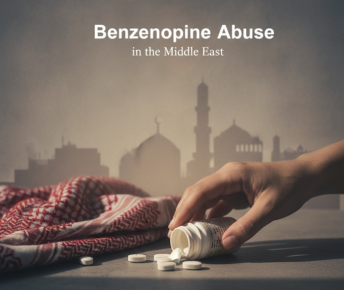
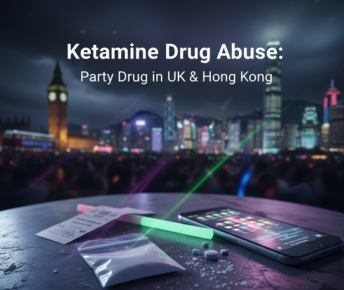











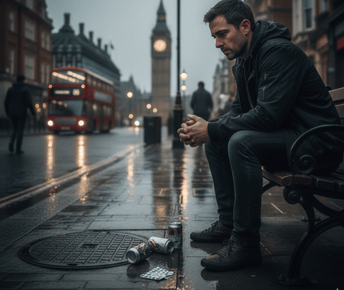



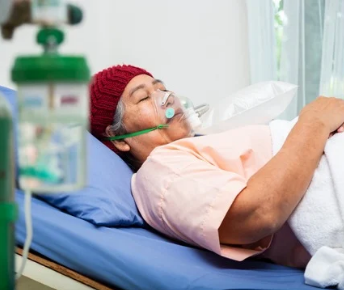
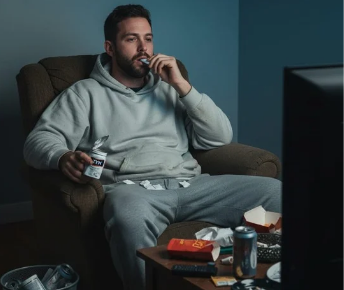

 Yes, many offer serene environments and solid therapeutic frameworks. However, quality varies, so it’s essential to research accreditation, staff credentials, and therapeutic depth.
Yes, many offer serene environments and solid therapeutic frameworks. However, quality varies, so it’s essential to research accreditation, staff credentials, and therapeutic depth.




